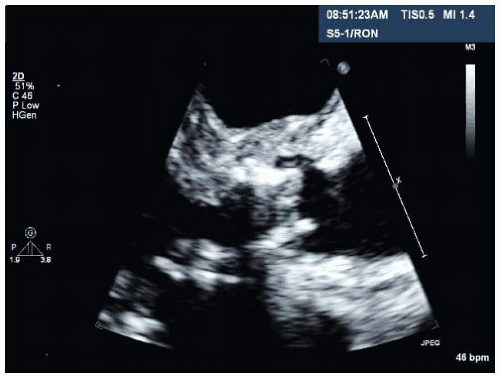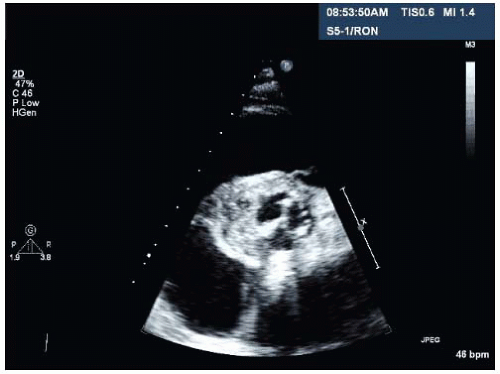Symptomatic Aortic Stenosis
A 72-year-old man underwent aortic valve replacement 2 months ago for symptomatic severe aortic stenosis. He now presents with a 2-week history of fever, chills, rigors, and worsening fatigue. On physical exam, his blood pressure is 110/75 mm Hg, and pulse is 105 beats per minute and regular. Neck veins are flat, carotid pulses are normal, and lungs are clear to auscultation. Cardiac exam reveals a well-healed midline scar, a normal S1 and S2 with no S3 or S4 gallops. There is a 2/6 systolic ejection murmur in the left upper sternal border that radiates to the carotids. Extremities are warm with no peripheral edema.
A. Mitral ring abscess
B. Aortic root abscess
C. Aortic valve dehiscence
D. Gerbode defect
E. All of the options
View Answer




ANSWER 1: B. The echocardiogram demonstrates a bioprosthetic valve in the aortic position. There is evidence of abnormal thickening around the aortic ring in the parasternal long-axis and short-axis views (Figs. 68-2 and 68-3 and Videos 68-3 and 68-4, marked with arrows). These findings, coupled with the clinical history, suggest the presence of an aortic ring abscess. Some degree of thickening around a bioprosthetic valve may represent normal postoperative change, so it is helpful to obtain a baseline TTE after aortic valve replacement to serve as a baseline for serial comparison.
Stay updated, free articles. Join our Telegram channel

Full access? Get Clinical Tree




